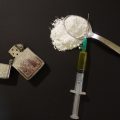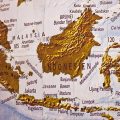DE FAAKTO OUTBREAK INTELLIGENCE
PAPUA NEW GUINEA
SITUATION-CIRCULATING VACCINE-DERIVED POLIOVIRUS TYPE 1
World Health Organization is reporting,
- On 26 June 2018, an outbreak of circulating vaccine-derived poliovirus type 1 (cVDPV1) was declared in Papua New Guinea following laboratory confirmation
- Since the declaration, a total of 26 confirmed cVDPV1 cases have been reported
- The last laboratory-confirmed case reported having experienced the onset of paralysis in late October 2018
WHO Risk Assessment
- WHO currently assesses the risk of international spread of poliovirus from Papua New Guinea to be low
- Circulating VDPVs are rare, though well-documented strains of poliovirus can emerge in some populations which are inadequately immunized
- The risk of further spread of cVDPV1 within the country remains a great concern due to poor routine immunization coverage
- The emergence of cVDPV1 strains underscores the importance of maintaining high levels of routine immunization coverage and effective surveillance systems for early detection
- WHO’s International Travel and Health recommends that all travellers to polio-affected areas be fully vaccinated against polio
- WHO Polio Vaccine Information https://www.who.int/ith/vaccines/polio/en/
About Polio
- There is no cure for polio, it can only be prevented. Polio vaccine, given multiple times, can protect a child for life
- Polio is a highly infectious disease caused by a virus. It invades the nervous system, and can cause total paralysis in a matter of hours. The virus is transmitted by person-to-person spread mainly through the faecal-oral route or, less frequently, by a common vehicle (for example, contaminated water or food) and multiplies in the intestine. Initial symptoms are fever, fatigue, headache, vomiting, stiffness of the neck and pain in the limbs. 1 in 200 infections leads to irreversible paralysis (usually in the legs). Among those paralysed, 5% to 10% die when their breathing muscles become immobilized. (WHO)
- WHAT IS VACCINE-DERIVED POLIO?
A: Oral polio vaccine (OPV) contains an attenuated (weakened) vaccine-virus, activating an immune response in the body. When a child is immunized with OPV, the weakened vaccine-virus replicates in the intestine for a limited period, thereby developing immunity by building up antibodies. During this time, the vaccine-virus is also excreted. In areas of inadequate sanitation, this excreted vaccine-virus can spread in the immediate community (and this can offer protection to other children through ‘passive’ immunization), before eventually dying out - On rare occasions, if a population is seriously under-immunized, an excreted vaccine-virus can continue to circulate
- WHO’s International Travel and Health recommends that all travelers to polio-affected areas be fully vaccinated against polio
Vaccines
- There are six different vaccines to stop polio transmission:
- Inactivated polio vaccine (IPV) – protects against poliovirus types 1, 2, and 3
- Trivalent oral polio vaccine (tOPV) – protects against poliovirus types 1, 2, and 3 – following the “OPV Switch” in
- April 2016, tOPV is no longer in use
- Bivalent oral polio vaccine (bOPV) – protects against poliovirus types 1, and 3
- Monovalent oral polio vaccines (mOPV1, mOPV2 and mOPV3) – protect against each individual type of poliovirus, respectively
WHO https://www.who.int/en/news-room/fact-sheets/detail/poliomyelitis
WHO https://www.who.int/csr/don/20-February-2019-polio-png/en/






